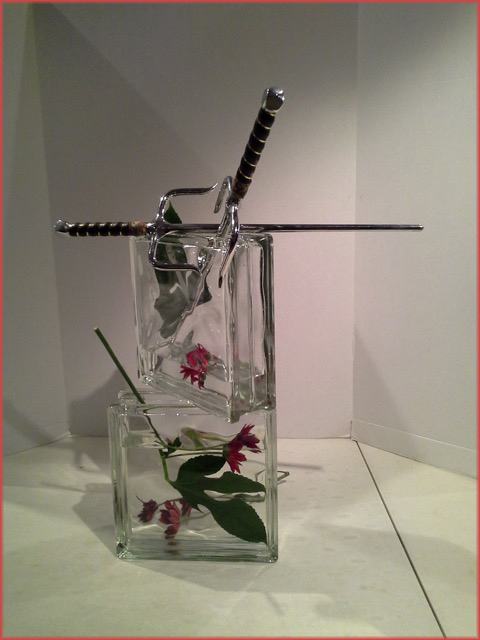Martial Arts, Flower-Arranging (Ikebana) and the Samurai Tradition
At Zen Fight Club in Ottawa, many elements of our training in Shorinjiryu karate involve integrating hard and soft principles as we strive to become well balanced martial artists and individuals. Our efforts in this regard are guided by the motto of our style:
Spiritual Development of Individuality in Mind and Body
Similarly, the warrior traditions upon which our martial art is based are steeped in combining spiritual pursuits and artistic disciplines with structured physical training. This allows us to become skilled warriors in every way, prepared to face the many challenges that modern life presents.
Ikebana in the Samurai Tradition

“Nice arrangement,” you may be thinking, “but what does flower-arranging have to do with karate and martial arts?”
The answer: quite a bit.
Both have roots in Samurai and Zen Buddhist traditions.
Zen Origins of Ikebana and Karate
Ikebana, the Japanese art of flower arranging (also known as kado—“the way of flowers”), began with monks in Buddhist temples and then was taken up by members of the aristocracy and the Samurai warrior class.
Karate traces its origins to the Shaolin Buddhist temple in China, where, according to legend, the Zen monk Bodhidharma developed a series of vigorous exercises and self-defense techniques to help keep the other monks at the temple strong, healthy, focused and safe.
It is said that Japanese Samurai practised ikebana to reach a state of peaceful concentration and mindfulness before going into battle.
How Ikebana Applies to the Modern Practice of Karate
Today, practising ikebana can help us as martial artists to learn concentration and patience and to see the essence of beauty in nature. It also reminds us of the impermanence of all living things, which is related to the second principle of our Dojo Kun (“training-hall rules”): Gain self-understanding by tasting the true meaning of combat.
Training in ikebana allows us to face our insecurities, get in touch with our creativity and progress on our spiritual path by gaining a deeper understanding of ourselves.
Effectively dealing with the various forms of aggression we face in our modern society requires not only physical aptitude and martial skill, but also a focused mind that is fluid and can appreciate and embrace the inherent beauty in the life force that surrounds all of us.
Exploring this path, through the creative practice of ikebana, also relates to the aesthetic nature of Shorinjiryu karate-do as summarized in third principle of our Dojo Kun: Search for pure principles of truth, justice and beauty.
If you would like to further explore how these principles are integrated into the practice of karate, contact Sensei James Taylor to inquire about our classes at Zen Fight Club.
If you have any questions about the discipline of ikebana, I would be happy to answer them.
Sensei George Rigby, 3rd Dan Shorinjiryu Kudaka Karate-do